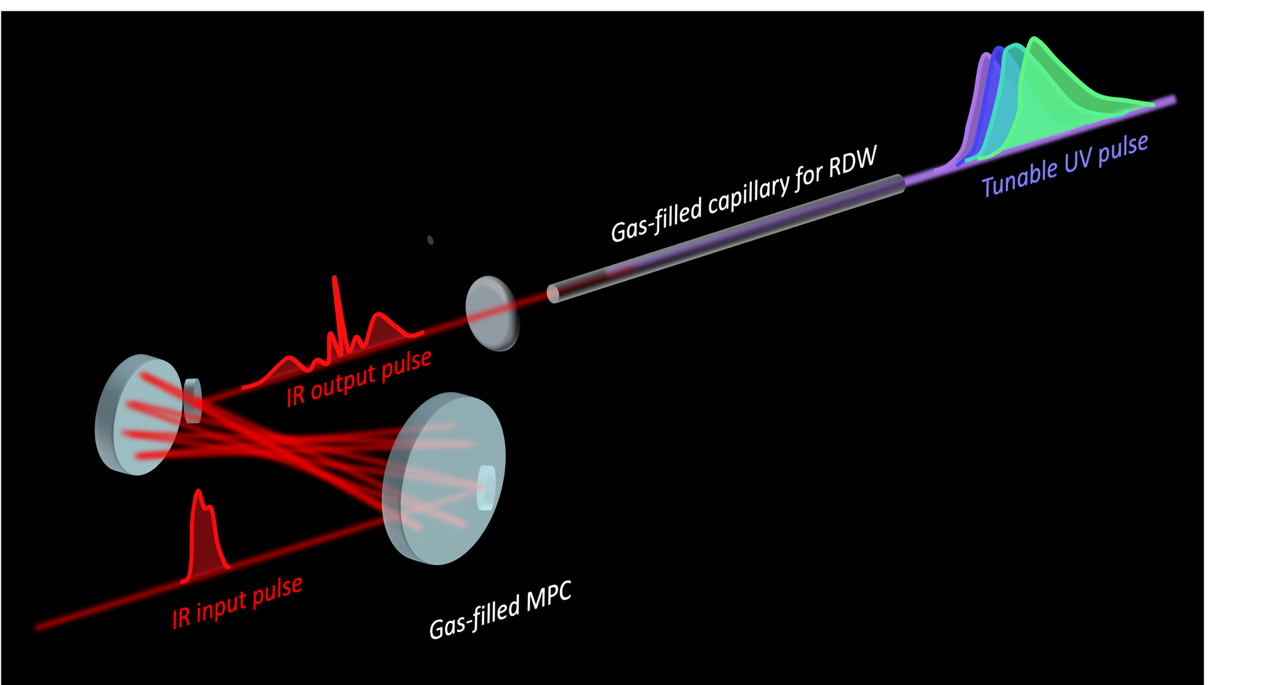New publication in APL Photonics
Multi-pass cell driven multi-kHz dispersive wave emission of broadband deep-UV pulses

A 150fs pulse from a Yb laser at 1030nm is first compressed in a dispersion-engineered MPC to reach a duration of ca. 15fs. The compressed pulse is subsequently coupled into a gas-filled capillary where it drives tunable RDW emission, resulting in few-femtosecond pulses in the UV.
In the context of ultrafast spectroscopy, the availability of few-femtosecond ultra-violet (UV) pulses is key to disclose the role of electron dynamics in photo-activated biochemically-relevant processes. Resonant dispersive wave (RDW) emission has become a widely implemented technique to generate few-cycle tunable UV laser pulses. It requires pump pulses significantly shorter than those directly available from high reptition-rate Yb lasers, which have durations above 100 fs and are incapable of directly driving RDW emission. However, post-compression of these laser sources has been achieved using gas-filled hollow core fibres (HCF), reaching sufficiently short pulse durations to drive RDW emission in a subsequent HCF. Multi-pass cells (MPC) have been shown as a promising alternative to HCF compressors, due to their advantageous energy scalability, higher throughput, and improved robustness to pointing instability. In this paper, the CFEL-ATTO group, in collaboration with researchers from the Photonics Research and Innovation group at DESY and Herriott-Watt University, demonstrated a compact table-top setup to generate tunable UV pulses by RDW emission, pumped with a rep. rate of 50 kHz using the sub-20 fs output of a dispersion-engineered MPC pulse compressor for the first time. The short UV pulses had Fourier transform limits between 2.5 fs and 3.2 fs.
The article is available here.